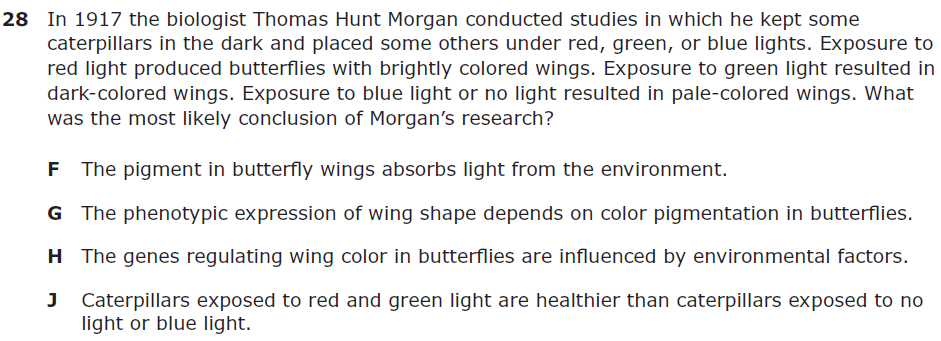In 1917 the biologist Thomas Hunt Morgan conducted studies in which he kept some caterpillars in the dark and placed some others under red, green, or blue lights. Exposure to red l... In 1917 the biologist Thomas Hunt Morgan conducted studies in which he kept some caterpillars in the dark and placed some others under red, green, or blue lights. Exposure to red light produced butterflies with brightly colored wings. Exposure to green light resulted in dark-colored wings. Exposure to blue light or no light resulted in pale-colored wings. What was the most likely conclusion of Morgan’s research?

Understand the Problem
The question is asking about the conclusions that can be drawn from research done by Thomas Hunt Morgan regarding the influence of light on the coloration of butterfly wings. It requires us to determine which of the provided statements best summarizes the findings of his study.
Answer
H: The genes regulating wing color in butterflies are influenced by environmental factors.
The answer is H: The genes regulating wing color in butterflies are influenced by environmental factors.
Answer for screen readers
The answer is H: The genes regulating wing color in butterflies are influenced by environmental factors.
More Information
Thomas Hunt Morgan's research demonstrated that environmental factors, such as light exposure, can influence genetic expression related to wing color in butterflies.
Tips
A common mistake is assuming the change in wing color is solely due to light absorption by pigments rather than genetic regulation influenced by environmental factors.
Sources
- Clinical Trials Pretest - vetmed.tamu.edu
AI-generated content may contain errors. Please verify critical information